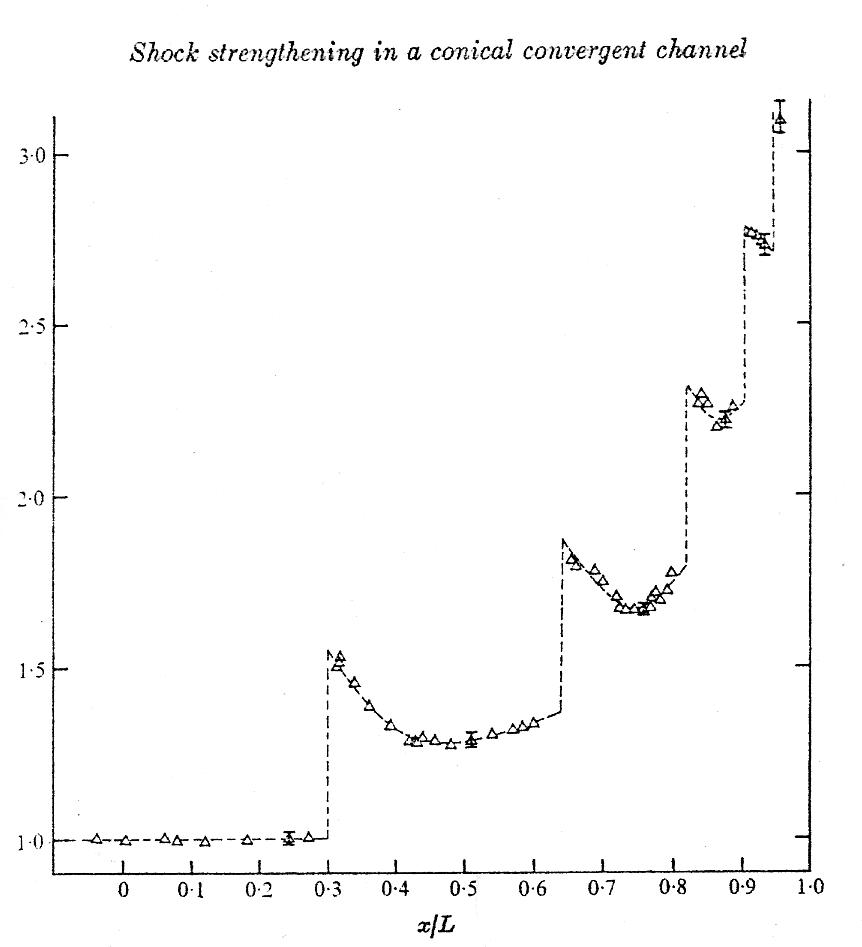Start of topic | Skip to actions
Converging shock experiments in a conical shocktube.
The experiments of Setchell,Strom and Sturtevant (JFM 1972), provide an excellent opportunity for validation of the VTF code when employing the GFM (ghost-fluid method). In these experiments a strong shock wave propagating into a gradually converging channel experiences a progressive strengthening. The mechanism by which this occurs is dominated by the refected shocks and triple points. Good agreement requires that these features are well represented, and poses a good test for the GFM. A breif summary of the experimental confinguration:- Conical half-angle: 10.17 degrees
- Diameter of shocktube 15.3cm
- Small shockspeed probe located on the axis of symmetry records data
- Probe diameter 3.22mm
- Mach 6 shock
- Single gas: Argon (gamma = 5/3, molecular weight 39.95)
- Unshocked gas at very low pressure: 1.5 Torr
- The experimental results: The shockspeed has been normalized against the incoming shock speed of Mach 6, and the length has been normalized against the length of the cone. Jumps in the shock speed corespond to the locations where the mach stem triple points meet at the axis of symmetry
- The simulation results are found to be in good agreement
- Additional simulations investigate
- The dependence on Mach number in convergence to the strong shock form
- The reflected shock structure as a function of conical half-angle
- The relationship with two-dimensional geometry.
